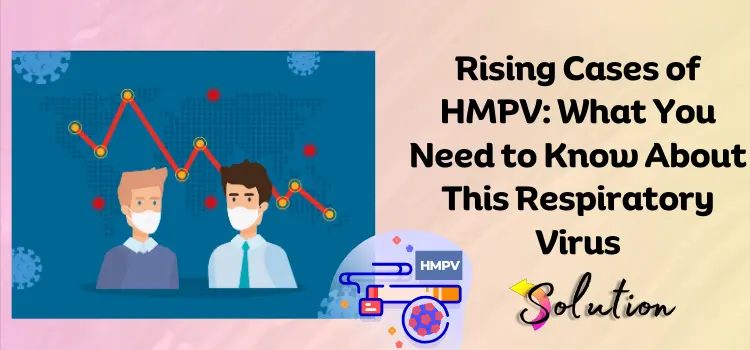
As of January 8th, 2025, Human Metapneumovirus (HMPV) cases have been rising steadily across the globe, particularly in Asia. Here is an overview of the HMPV-reported cases:
- China: By the end of 2024, HMPV was linked to 6.2% of positive respiratory illness tests and 5.4% of respiratory-illness hospitalizations, which surpasses the rate for rhinovirus and COVID-19.
- Malaysia: The country reported 327 HMPV cases, which rises from 225 cases as compared to 2023.
- India: The country reported its first case in the early days of January 2025, including an 8-month-old male infant in Bengaluru and a 3-month-old girl, with a total of 5 cases.
- Kazakhstan: 30 cases have been reported so far, but still the number remains low as compared to other respiratory viruses like COVID-19 or rhinovirus.
- United States: A sudden rise in HMPV cases has been noticed there from November 2024, with an average of 1.94% of weekly tests.
To avail oneself of the most current and detailed information about HMPV cases, it’s advisable to trust the authorized news and sources of the World Health Organization (WHO).
An Overview of Human Metapneumovirus (HMPV)
Human Metapneumovirus (HMPV) is a respiratory disease that causes similar symptoms to a cold. It is particularly dangerous for young children, elderly citizens, or those with weakened immune systems. The Netherlands first identified HMPV in 2001, and since then, the world has recognized it as a common cause of respiratory infections.
This virus belongs to Paramyxoviridae, which is a family of viruses that also includes Respiratory Syncytial Virus (RSV). It often causes symptoms such as coughing, wheezing, and difficulty in breathing.
HMPV is transmitted through respiratory droplets when an infected person coughs or sneezes, making it highly contagious. This virus is known to spread rapidly in crowded places, especially in late winter and early spring, similar to the seasonal patterns of other respiratory viruses.
The Origin of Human Metapneumovirus (HMPV)
HMPV was first identified in the Netherlands in 2001. With the help of advanced molecular techniques, a team of scientists led by Dr. Albert Osterhaus determined that HMPV has likely originated from birds and then adapted to infected humans. Further, they find that the virus is similar to another virus known as Avian Metapneumovirus (AMPV), which infects birds.
This zoonotic transmission is believed to have occurred through the close contact between humans and infected birds. This is expected to have occurred many years before the first documented case in humans, as zoonotic transmissions often take time to establish themselves in new host populations.
Once established in humans, HMPV has continued to evolve and circulate globally, causing respiratory issues in people of all ages. In 2003-2004, North America, Europe, and Asia reported outbreaks of HMPV-related bronchiolitis and pneumonia. Between 2010 and 2020, HMPV has become a recognized contributor to severe respiratory illness in children and elderly people.
Symptoms of Human Metapneumovirus (HMPV)
Let’s take a look at the symptoms of Human Metapneumovirus (HMPV):
- Mild respiratory symptoms including runny nose, cough, sore throat, sneezing, and mild headache.
- Lower respiratory symptoms such as wheezing, shortness of breath, chest discomfort, or difficult breathing.
- Severe symptoms such as bronchiolitis, pneumonia, high fever, fatigue and lethargy, and rapid breathing.
These symptoms typically appear within 3-6 days after exposure to the virus, and mild cases can be resolved within 7-10 days.
Why are the Human Metapneumovirus (HMPV) Cases Arising Again?
In the mid December of 2024, health agencies in China reported an overall increase in HMPV cases in Northern China. Many health experts believe that the resurgence of HMPV cases might be due to a combination of factors, including decreased immunity and increased indoor gatherings during the winter season.
The city of Wuhan, Hubei Province, identified the first case in China in December 2024. A 7-year-old child was the first confirmed case, leading to concerns about potential widespread transmission in the region.
Therefore, the concerned doctors identified HMPV as the causative pathogen, making it a priority to implement targeted interventions to prevent further spread of the virus in the community. This raises a fueled alarm for the potential outbreaks in other regions as well.
Following China, reports of positive cases of HMPV also came from Malaysia, India, and the United States, prompting global health organizations to closely monitor the situation and coordinate appropriate measures to prevent the pandemic
Several rules and regulations have been applied to enhance surveillance, travel restrictions, and public health measures to contain the spread of HMPV and protect vulnerable populations.
How Serious is Human Metapneumovirus (HMPV)?
Ranging from severe respiratory issues to mild cold symptoms, HMPV can be particularly dangerous for young children, infants, and elderly people. It initially seems like a normal cold or flu, but as the days pass, it can become more serious respiratory complications such as pneumonia or bronchiolitis.
While many healthy and young adults easily recover from it, elderly people, especially those over 65 and who are already suffering from respiratory issues like asthma or COPD, are at a higher risk of developing severe complications from HMPV.
Well, the death rate varies significantly depending on the population affected and the healthcare industry. But as of now, there is no specific treatment for HMPV; the death risk in young adults is very minimal, depending on the severity of the infection, the presence of underlying health issues, and access to medical care.
A study suggests that the mortality rate of infants hospitalized with severe HMPV infections ranges between 1% and3%. An immature immune system, severe respiratory complications, and delayed diagnosis and treatment are the main causes.
Tips to Prevent HMPV
Right now, there is no proper medication or vaccination available to prevent HMPV. But there are various self-prevention ways and techniques that can help reduce the risk of contracting HMPV.
- Wash your hands frequently with high quality soap for over 20 seconds, or use a strong alcohol-based hand sanitizer.
- While sneezing or coughing, always cover your mouth and nose with a tissue paper and dispose of it safely in a closed bin.
- Wear masks in crowded or enclosed spaces, and avoid attending any social events.
- Don’t neglect your immune system. Eat fruits and vegetables that are high in Vitamin C and get plenty of rest to keep your immune system strong.
- Avoid smoking or drinking alcohol at any cost.
- Eat a healthy, balanced diet and stay hydrated. This will help your body fight off any potential infections at that time.
Does HMPV Worsen the Situation than COVID-19?
As the world prepares itself for a fight against HMPV, the question of whether HMPV will worsen the situation more than COVID-19 has been a part of sparkling debates. While both viruses possess significant risk and share common symptoms, it’s particularly important to stay informed and follow guidelines from health authorities to prevent the spread of both viruses.
Yet, what makes HMPV unique is its ability to cause severe respiratory issues in young children and old-aged citizens. Its growing cases in the recent months still leave a remarkable impression on the healthcare system, prompting researchers and scientists to work diligently towards finding effective treatment.
Key Takeaways!
Human Metapneumovirus (HMPV) is a common virus that seems similar to a cold. It may not be as widely recognized as other respiratory issues, but its impact on public health cannot be underestimated. While there is no particular treatment for this disease, it’s important to follow basic prevention guidelines and keep your immune system strong.
It’s essential to keep yourself updated with the latest information and research on HMPV to protect yourself and others from potential health risks. Try to get in touch with a professional expert to get the best guidance on how to protect yourself and your loved ones from HMPV. Stay safe, informed, and proactive in preventing the spread of HMPV. Also, check out our other blogs to keep yourself updated with the latest news and trends going in the world.


